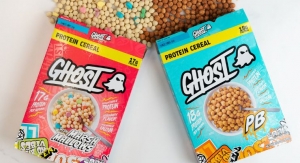Peter Leighton07.01.10
Early humans relied on calories for survival. From foraging to hunting, man’s diet was extremely diverse and relatively unpredictable. We ate from hundreds of crops and wild animals, offering exceptional biodiversity in our diet, and our bodies adapted to the inconsistent intake of nutrients with an amazing ability to maximize their efficiency. Soon man was domesticating animals and mastering agricultural practices, which resulted in incredible benefits in health and mortality, as well as facilitating changes in lifestyle. In a relative short order, man was eating for taste and satiety as our modern agricultural and food practices were born.
Fast forwarding several decades, post-industrial agricultural and food processing has removed phytonutrients heretofore thought “inactive” or useless. These compounds are routinely removed from plants through selective breeding and modern processing. And while we used to eat from more than 800 plant foods, now most Americans eat only three, namely French fries, ketchup and iceberg lettuce. Modern practices are also introducing many chemicals to the plants and animals we eat, in efforts to increase yield and profitability. At the same time, studies are starting to demonstrate a relationship between our (Western) diet and chronic diseases.
This is one of the key reasons why functional foods are meeting high consumer demand; these products can target the nutritional needs created by our changing diet and lifestyles, integrating a variety of healthful or nutritious components. What’s more, functional foods are often experiential and convenient, providing a perfect storm that has been driving double-digit growth.
It Starts in the Field
Today’s scientifically bred produce grows so quickly that it contains measurably fewer micronutrients. Research conducted at the University of Texas at Austin concluded that recently grown crops have shown decreases of up to 38% in protein, calcium, vitamin C, phosphorus, iron and riboflavin when compared with produce from past decades. In fact, of the 13 major nutrients found in fruits and vegetables, six have declined substantially.
Most plants produce a host of phytochemicals that perform varying metabolic functions, such as coloring agents known as flavonoids to protect against excessive sunlight and other stresses, and sulforaphane (an astringent in broccoli) to discourage the plant from being eaten by animals. These compounds are routinely removed from plants through selective breeding and modern processing.
But recent science is now discovering tremendous value for these “orphaned phytonutrients.” As sensitive and specific biotechnology and pharmaceutical R&D tools are being applied to nutrition science, more and greater data are confirming the health benefits of these compounds, and epidemiological studies are linking their depletion from the food chain to increases in chronic diseases. For example, the sulforaphane that has been selectively bred out of commercial broccoli because of its bitter taste has been found to stimulate enzymes in the body that detoxify chemical carcinogens. Similarly, while there are hundreds of flavonoids, science has been uncovering a host of exceptional health benefits they confer, most significantly their cardiovascular benefit.
Both scientists and consumers are now recognizing this conundrum and are moving to take an active role in maintaining health and wellness through nutrition. Integrating the new tools of biotechnology and nutrigenomics, for instance, innovative solutions are being created and applied to a new generation of “wellness” foods. Here consumers will find lifestyle solutions, where validated science and functional benefit meet pleasure and convenience.
Avoid the Medicine Cabinet
As an outgrowth of the nutrition industry, many companies have been working hard to aggregate nutrition, taste, convenience and targeted functionality into food and beverage products. While these so called “functional foods” are not a new class of products, because of their tremendous popularity this moniker has been created to distinguish them from conventional or processed foods.
Currently, the U.S. market for functional foods is greater than $30 billion in sales—representing about 5% of the total U.S. food market—and it’s growing 10% percent a year, which is far more than the 1-4% predicted for the conventional food market. By 2013 the U.S. functional foods market will be worth around $43 billion.
Consumers are finding functional foods attractive for a variety of reasons. Most are more proactive about their health, especially Baby Boomers who are witnessing the age-related health issues of their parents and vainly refuse to succumb to the same problems down the road. As a result, many are recognizing the need for reintroducing the many “lost” nutrients that are proving to be beneficial for optimal health.
Advances in food science have helped bring a far superior taste and mouthfeel to the integration of some otherwise nasty tasting bioactive ingredients. And while consumers have accepted the need for vitamin supplementation, 55% would prefer to buy foods for nutritional benefits. To be successful in marketing functional foods one must remember that science tells and emotion sells. In other words, successful functional foods are based on science but purchased for taste and convenience—they are not medicines.
Types of Functional Foods
There are three different types of functional foods. First, there are those products that are inherently healthy. This includes products that do not add any bioactives, but intrinsically contain nutritional compounds that have scientific data to support functionality. For instance, Welch’s grape juice sales increased 33% following the release of clinical data supporting antioxidant activity and cardiovascular benefits; Gardenburger sales increased 25% in the two months following the FDA approved health claim for soy; cranberry juice sales increased 20% after the results of a 1994 Harvard study demonstrated health benefits; and General Mill’s Cheerios sales jumped 11% after being marketed for a heart health benefit.
The second category of functional foods includes those which add a researched bioactive compound to provide a health benefit. The classic example here is Tropicana Pure Premium orange juice, which reformulated its line with added calcium, growing sales 173% and building a new category. This class of functional foods addressed the reintroduction of orphaned phytonutrients.
Finally, engineered functional foods are those formulated specifically to deliver a desired functional benefit. Whether you knock back a Red Bull for an energy lift, a PowerBar for sports performance benefit, or a Gatorade to replenish electrolytes, these products are based on scientific research to deliver to the consumer a desired benefit.
Functional foods are not a panacea and are therefore bound to be abused, just as dietary supplements have been. In other words, in controlled dosing, such as pills, one can specify the amount of certain bioactive compounds such as vitamin A. But when these compounds are in a food product, it is a bit more difficult to manage the dosing, especially when a good tasting snack product is involved. Maybe one just wasn’t enough and soon the consumer is doubling or tripling the amount of vitamin A, possibly reaching a potentially toxic level. Remember General Mill’s Cheerios? Well, FDA recently claimed that Cheerios were being marketed as a drug, since the company promoted cholesterol reduction of 4% in six weeks.
Another valid concern is the encouragement of additional caloric intake. Functional foods “delude people into thinking that [they] are healthy,” says author and New York University food scientist Marion Nestle. And many of the foods marketed as functional are not particularly “healthy” aside from the bioactives involved.
Considering more than half of households are using food or beverages to treat or manage specific health issues, it is important to recognize the burden that must be carried by companies marketing these products. If consumers are eating medicine like it’s food, they could get too much of a good thing. And the consumption of additional calories simply feeds a real health pandemic: obesity. So it is very important that manufacturers think very carefully about what they are formulating and how they are marketing these functional food products. The key take away is this: functional food success will be defined by wellness, not disease treatment.
The FDA is in Play
The FDA has recently been “raising questions” as to whether or not certain functional beverages are legal. Consequently, the agency recently issued a new guidance (see 21 CFR 10.115(g)(5)) related to the difference between liquid dietary supplements and beverages bearing novel ingredients.
According to FDA, “We have seen an increase in the marketing of beverages as dietary supplements, in spite of the fact that the packaging and labeling of many liquid products represent the products as conventional foods. Products that are represented as conventional foods do not meet the statutory definition of a dietary supplement…”
FDA further explains, “Liquid products that suggest through their serving size, packaging, or recommended daily intake that they are intended to be consumed in amounts that provide all or a significant part of the entire daily drinking fluid intake of an average person in the U.S., are represented as beverages.” Such products, FDA said, “may not be marketed as a dietary supplement.”
For the future, this line of thinking on behalf of the FDA may not be limited to just beverages, but may soon apply functional foods as well. In the meantime, this issue will likely remain “on the table” until properly challenged in court—but it demonstrates the need to pick your battles carefully and act responsibly.
Formulating for Success
There’s a host of formulation issues to consider when developing functional foods, some unique to the nature of functional foods and others that challenge most any food technologist. For instance, many of the bioactive phytonutrients that have demonstrated significant benefit are also often very bitter and distasteful. Many of these bioactives have clinical data supporting benefits at certain dosage levels—and many times these levels limit the delivery forms and present some obstacles in achieving great taste. Survivability and bioavailability are also important considerations, especially when making a health claim or “structure/function” statement. And there is always the issue of cost. While many functional foods can demand a slight premium in price, there are limits and relationships to perceived benefits.
Typically there are two approaches to formulating functional foods, bottom up and top down. Bottom up refers to the application of a new technology or bioactive into a product form. In general this approach is platform driven—such as exploring the many ways probiotics can be delivered. Top-down formulating is driven by the desire to address a consumer need. For example, this approach may utilize probiotics to address better immune function in children.
Some Bottom-Up Trends to Watch
Fiber. According to the American Dietetic Association, most adults consume only 14-15 grams of fiber per day, significantly less than the RDI of 38 grams. In 2007, General Mills expanded its Fiber One brand to include nutrition bars. These “functional” bars racked up first year sales in excess of $100 million. Most consumers recognize the need for fiber, have a tough time consuming enough in their diet, and associate it with weight loss and better digestive health.
Omega 3s. Linked to lower blood pressure, a reduced risk of heart disease, a decrease in arthritic symptoms, and benefits for pregnancy, postpartum, and infant health, omega 3s will continue to gain significant ground.
Plant Sterols. Research has linked plant sterols to lowering cholesterol, reducing the risk of certain cancers, and having menopausal benefits. While the early entrants to the market have anchored strongly to therapeutic positions, this class of bioactives has tremendous potential.
Peptides. More and more research is demonstrating a host of benefits related to various peptides. Some are focused on reducing anxiety while others are lowering blood pressure.
Probiotics. One of the largest segments of the functional foods market, probiotics continues to show impressive growth and flexibility. Probiotics are thought to improve lactose tolerance, reduce diarrhea, enhance immunity, prevent colon cancer, improve IBS symptoms and lower blood pressure.
Nanotechnology. Advances in nanotechnology are driving discovery of new compounds and carriers that overcome some of the other challenges facing food technologists. Furthermore, as research continues to evolve in this area, we are learning more about this tool for receptor activity.
Phyto-specifics. Advances in research and technology are identifying and characterizing specific botanical compounds that have exceptional (and often specific) benefits. These include classes of compounds such as polyphenols and catechins, and very specific fractions.
Some Top-Down Trends to Watch
Beauty from Within. Tapping into the vanity of Baby Boomers is proving to be a compelling driver for products that can help mitigate aging and enhance perceived beauty. This will be a very robust category as it is only now in its infancy.
Mood Food. A 2006 study suggested that dietary changes might be responsible for the increased diagnosis rate of mental illnesses. More than a third of consumers strongly believe foods can be used to improve mental health. Look for increased desire in functional foods that can positively alter mood and reduce stress and anxiety.
Sleep. Related to anxiety, sleep is a major issue that consumers are grappling with and they will look toward food for help—64% of the population suffers from sleep problems several times a week, and this number is growing at more than 13% per year.
Digestive Health. Both acute and chronic digestive issues are major concerns that consumers are readily open to self-medicating. The global market for probiotics alone is greater than $16 billion.
Immune Enhancement. Globally, immune support is the biggest parental health concern, and it will continue to grow and sub-segment.
Cognitive Function. Half of 50–64 year olds are very concerned about lack of mental sharpness versus 43% of the total population. As Baby Boomers age, they are looking to keep their mental edge, and younger, competitive consumers are eager for a performance enhancer.
Libido. Speaking of performance enhancement, this segment will continue to blaze a trail in the consumer products market. Consumers are paying upwards of $10 per dose to enhance their sexual experience.
Phytonutrition. A WHO report attributes at least 2.7 million deaths a year to insufficient fruit and vegetable intake—resulting in cardiovascular disease, stroke, type 2 diabetes, some cancers and obesity. According to the U.S. Council on Nutrition, 91% of Americans don’t get the minimum five servings of fruits and vegetables per day.
Weight Management. The U.S. population spends $30 billion a year on self-care products for obesity. There are several distinct sub-segments in the weight management category, and satiety is currently a very strong growth sector.
Energy. Thirty-five million people have concerns about their energy levels. One need only look at the meteoric sales of energy drinks and shots to see the consumer need, yet this category could draw new blood through sub-segmentation and alternative mechanisms of action.
Joint Health. Eighty million people suffer from joint pain and the expansion from supplements into functional foods is just taking root. Combined with an aging population, there is no doubt this category will continue to grow.
Addressing the Top-Down Trends Through Market Segments
Kids. Ninety percent of parents say they try to ensure their children have a nutritious, balanced diet, but that it is difficult to find healthy products with “child-appeal.” According to the National Institute of Arthritis and Musculoskeletal and Skin Diseases, up to 90% of peak bone mass is acquired by age 18 in girls and age 20 in boys, which makes youth the best time to “invest” in bone health. This presents an opportunity to target children with bone-fortifying products via concerned parents. The number of kids under age 6 is projected to grow 10% by 2015.
Seniors. As 31 million Americans turn 65 over the next 10 years, the demand for condition-specific foods will grow. More than half of adults are controlling their diet in some manner—61% for weight, 36% cholesterol, 22% blood sugar, 18% high blood pressure and 14% diabetes. Seniors have special needs and functional foods can address them well. Many seniors already take several medications, and functional foods can offer nutritive support to balance pharmaceutical depletion without more pills.
Diabetics. The number of people living with diabetes worldwide is expected to double from the current 140 million to 300 million by 2025. According to the American Society of Nuclear Cardiology, one in four people suffering from Type II diabetes also has heart disease but shows no obvious signs of the disease. A new generation of children suffering from type 2 diabetes will further drive functional food opportunities.
Menopausal Women. Forty-seven million women are either menopausal or peri-menopausal. Menopause brings greater risk for heart attacks, stroke, bone fractures, obesity, depression/mood issues, insomnia, periodontal disease and eye problems. This is a market begging for solutions and functional foods may just be the answer.
Remember, Consumers Want Wellness
Eighty percent of Americans say they consume or are interested in consuming functional foods and beverages. A 2009 research report from Pricewaterhouse Coopers illustrates that even in a weak economy people will pay a premium for products seen as preventing a health problem or providing a good alternative to sodas and empty-calorie snacks.
In aggregating and analyzing the data on functional food products and consumer research surveys, one thing becomes apparent: Consumer interest in functional foods is related to their “health halo”—their scientific support or experiential effect in maximizing health, performance and perceived wellness. These products fail miserably when marketed or consumed as therapeutic products. The largest functional food categories are ones that are not considered therapeutic, but rather preventative or wellness-oriented. Nearly 70% of Americans are pursuing a preventative lifestyle vs. 27% who are trying to treat a health concern. Consumers are looking for tasty, convenient and “healthful” options to “traditional” foods and beverages. They will not sacrifice taste, and prefer products that will enhance their well-being.
References furnished upon request.
About the author: Peter Leighton is a principal at Natural Discoveries LLC, which recently launched a novel ecommerce website, www.abundahealth.com, which features new and innovative functional health products based on sound science, and a B2B web portal, www.nutritionalfinds.com, which advances the commercialization of novel bioactives, technologies and nutraceuticals. Mr. Leighton has been responsible for the development and launch of some of the leading nutraceutical products on the market. He has held senior executive positions with companies such as Advana Science, Natrol, Galileo Laboratories, Weider Nutrition, InterHealth Nutraceuticals, and is the founder of consulting firm Copernican Associates. Read his blog at www.leightonpost.com. Twitter: @leightonpost.
There are four rules that are critical to the success of functional foods.
1. Provide a benefit that is appreciated and understood—science tells and emotion sells. Use strong and appropriate scientific research to identify, characterize and support your functional food product, but stay away from any kind of therapeutic message. Don’t overcomplicate the product, and work within the confines of existing consumer perceptions. It is hard for people to make quantum leaps; they are much better at incremental steps up the knowledge tree. Don’t “dumb it down” but rather give it context.
2. Consumers eat to enjoy, and everything else is secondary. A product must be experiential (whether by taste or use), intuitive (in how to use or how it works), safe and validated.
3. Use appropriate validation. Everything must be validated, whether you realize it or not. There are three types of validation: First person validation is when you try something and it meets your expectations. Second party validation is when you rely on an expert, whether your cousin the computer geek or Consumer Reports, or even your favorite celebrity, to provide a recommendation or validation. Third party validation is a regulatory or institutional seal of approval. The more therapeutic a product or greater the risk of use, the more reliant you must be on third party validation.
4. Deliver a wellness solution, not a medicine. Besides the fact that FDA and FTC are itching for a showdown, time and again the market has shown disfavor for functional foods trying to market themselves as therapeutics. To use CVD as an example, it is so much easier and validated to take a statin than to make a dietary sacrifice and “hope” that it’s having an impact.
Fast forwarding several decades, post-industrial agricultural and food processing has removed phytonutrients heretofore thought “inactive” or useless. These compounds are routinely removed from plants through selective breeding and modern processing. And while we used to eat from more than 800 plant foods, now most Americans eat only three, namely French fries, ketchup and iceberg lettuce. Modern practices are also introducing many chemicals to the plants and animals we eat, in efforts to increase yield and profitability. At the same time, studies are starting to demonstrate a relationship between our (Western) diet and chronic diseases.
This is one of the key reasons why functional foods are meeting high consumer demand; these products can target the nutritional needs created by our changing diet and lifestyles, integrating a variety of healthful or nutritious components. What’s more, functional foods are often experiential and convenient, providing a perfect storm that has been driving double-digit growth.
It Starts in the Field
Today’s scientifically bred produce grows so quickly that it contains measurably fewer micronutrients. Research conducted at the University of Texas at Austin concluded that recently grown crops have shown decreases of up to 38% in protein, calcium, vitamin C, phosphorus, iron and riboflavin when compared with produce from past decades. In fact, of the 13 major nutrients found in fruits and vegetables, six have declined substantially.
Most plants produce a host of phytochemicals that perform varying metabolic functions, such as coloring agents known as flavonoids to protect against excessive sunlight and other stresses, and sulforaphane (an astringent in broccoli) to discourage the plant from being eaten by animals. These compounds are routinely removed from plants through selective breeding and modern processing.
But recent science is now discovering tremendous value for these “orphaned phytonutrients.” As sensitive and specific biotechnology and pharmaceutical R&D tools are being applied to nutrition science, more and greater data are confirming the health benefits of these compounds, and epidemiological studies are linking their depletion from the food chain to increases in chronic diseases. For example, the sulforaphane that has been selectively bred out of commercial broccoli because of its bitter taste has been found to stimulate enzymes in the body that detoxify chemical carcinogens. Similarly, while there are hundreds of flavonoids, science has been uncovering a host of exceptional health benefits they confer, most significantly their cardiovascular benefit.
Both scientists and consumers are now recognizing this conundrum and are moving to take an active role in maintaining health and wellness through nutrition. Integrating the new tools of biotechnology and nutrigenomics, for instance, innovative solutions are being created and applied to a new generation of “wellness” foods. Here consumers will find lifestyle solutions, where validated science and functional benefit meet pleasure and convenience.
Avoid the Medicine Cabinet
As an outgrowth of the nutrition industry, many companies have been working hard to aggregate nutrition, taste, convenience and targeted functionality into food and beverage products. While these so called “functional foods” are not a new class of products, because of their tremendous popularity this moniker has been created to distinguish them from conventional or processed foods.
Currently, the U.S. market for functional foods is greater than $30 billion in sales—representing about 5% of the total U.S. food market—and it’s growing 10% percent a year, which is far more than the 1-4% predicted for the conventional food market. By 2013 the U.S. functional foods market will be worth around $43 billion.
Consumers are finding functional foods attractive for a variety of reasons. Most are more proactive about their health, especially Baby Boomers who are witnessing the age-related health issues of their parents and vainly refuse to succumb to the same problems down the road. As a result, many are recognizing the need for reintroducing the many “lost” nutrients that are proving to be beneficial for optimal health.
Advances in food science have helped bring a far superior taste and mouthfeel to the integration of some otherwise nasty tasting bioactive ingredients. And while consumers have accepted the need for vitamin supplementation, 55% would prefer to buy foods for nutritional benefits. To be successful in marketing functional foods one must remember that science tells and emotion sells. In other words, successful functional foods are based on science but purchased for taste and convenience—they are not medicines.
Types of Functional Foods
There are three different types of functional foods. First, there are those products that are inherently healthy. This includes products that do not add any bioactives, but intrinsically contain nutritional compounds that have scientific data to support functionality. For instance, Welch’s grape juice sales increased 33% following the release of clinical data supporting antioxidant activity and cardiovascular benefits; Gardenburger sales increased 25% in the two months following the FDA approved health claim for soy; cranberry juice sales increased 20% after the results of a 1994 Harvard study demonstrated health benefits; and General Mill’s Cheerios sales jumped 11% after being marketed for a heart health benefit.
The second category of functional foods includes those which add a researched bioactive compound to provide a health benefit. The classic example here is Tropicana Pure Premium orange juice, which reformulated its line with added calcium, growing sales 173% and building a new category. This class of functional foods addressed the reintroduction of orphaned phytonutrients.
Finally, engineered functional foods are those formulated specifically to deliver a desired functional benefit. Whether you knock back a Red Bull for an energy lift, a PowerBar for sports performance benefit, or a Gatorade to replenish electrolytes, these products are based on scientific research to deliver to the consumer a desired benefit.
Functional foods are not a panacea and are therefore bound to be abused, just as dietary supplements have been. In other words, in controlled dosing, such as pills, one can specify the amount of certain bioactive compounds such as vitamin A. But when these compounds are in a food product, it is a bit more difficult to manage the dosing, especially when a good tasting snack product is involved. Maybe one just wasn’t enough and soon the consumer is doubling or tripling the amount of vitamin A, possibly reaching a potentially toxic level. Remember General Mill’s Cheerios? Well, FDA recently claimed that Cheerios were being marketed as a drug, since the company promoted cholesterol reduction of 4% in six weeks.
Another valid concern is the encouragement of additional caloric intake. Functional foods “delude people into thinking that [they] are healthy,” says author and New York University food scientist Marion Nestle. And many of the foods marketed as functional are not particularly “healthy” aside from the bioactives involved.
Considering more than half of households are using food or beverages to treat or manage specific health issues, it is important to recognize the burden that must be carried by companies marketing these products. If consumers are eating medicine like it’s food, they could get too much of a good thing. And the consumption of additional calories simply feeds a real health pandemic: obesity. So it is very important that manufacturers think very carefully about what they are formulating and how they are marketing these functional food products. The key take away is this: functional food success will be defined by wellness, not disease treatment.
The FDA is in Play
The FDA has recently been “raising questions” as to whether or not certain functional beverages are legal. Consequently, the agency recently issued a new guidance (see 21 CFR 10.115(g)(5)) related to the difference between liquid dietary supplements and beverages bearing novel ingredients.
According to FDA, “We have seen an increase in the marketing of beverages as dietary supplements, in spite of the fact that the packaging and labeling of many liquid products represent the products as conventional foods. Products that are represented as conventional foods do not meet the statutory definition of a dietary supplement…”
FDA further explains, “Liquid products that suggest through their serving size, packaging, or recommended daily intake that they are intended to be consumed in amounts that provide all or a significant part of the entire daily drinking fluid intake of an average person in the U.S., are represented as beverages.” Such products, FDA said, “may not be marketed as a dietary supplement.”
For the future, this line of thinking on behalf of the FDA may not be limited to just beverages, but may soon apply functional foods as well. In the meantime, this issue will likely remain “on the table” until properly challenged in court—but it demonstrates the need to pick your battles carefully and act responsibly.
Formulating for Success
There’s a host of formulation issues to consider when developing functional foods, some unique to the nature of functional foods and others that challenge most any food technologist. For instance, many of the bioactive phytonutrients that have demonstrated significant benefit are also often very bitter and distasteful. Many of these bioactives have clinical data supporting benefits at certain dosage levels—and many times these levels limit the delivery forms and present some obstacles in achieving great taste. Survivability and bioavailability are also important considerations, especially when making a health claim or “structure/function” statement. And there is always the issue of cost. While many functional foods can demand a slight premium in price, there are limits and relationships to perceived benefits.
Typically there are two approaches to formulating functional foods, bottom up and top down. Bottom up refers to the application of a new technology or bioactive into a product form. In general this approach is platform driven—such as exploring the many ways probiotics can be delivered. Top-down formulating is driven by the desire to address a consumer need. For example, this approach may utilize probiotics to address better immune function in children.
Some Bottom-Up Trends to Watch
Fiber. According to the American Dietetic Association, most adults consume only 14-15 grams of fiber per day, significantly less than the RDI of 38 grams. In 2007, General Mills expanded its Fiber One brand to include nutrition bars. These “functional” bars racked up first year sales in excess of $100 million. Most consumers recognize the need for fiber, have a tough time consuming enough in their diet, and associate it with weight loss and better digestive health.
Omega 3s. Linked to lower blood pressure, a reduced risk of heart disease, a decrease in arthritic symptoms, and benefits for pregnancy, postpartum, and infant health, omega 3s will continue to gain significant ground.
Plant Sterols. Research has linked plant sterols to lowering cholesterol, reducing the risk of certain cancers, and having menopausal benefits. While the early entrants to the market have anchored strongly to therapeutic positions, this class of bioactives has tremendous potential.
Peptides. More and more research is demonstrating a host of benefits related to various peptides. Some are focused on reducing anxiety while others are lowering blood pressure.
Probiotics. One of the largest segments of the functional foods market, probiotics continues to show impressive growth and flexibility. Probiotics are thought to improve lactose tolerance, reduce diarrhea, enhance immunity, prevent colon cancer, improve IBS symptoms and lower blood pressure.
Nanotechnology. Advances in nanotechnology are driving discovery of new compounds and carriers that overcome some of the other challenges facing food technologists. Furthermore, as research continues to evolve in this area, we are learning more about this tool for receptor activity.
Phyto-specifics. Advances in research and technology are identifying and characterizing specific botanical compounds that have exceptional (and often specific) benefits. These include classes of compounds such as polyphenols and catechins, and very specific fractions.
Some Top-Down Trends to Watch
Beauty from Within. Tapping into the vanity of Baby Boomers is proving to be a compelling driver for products that can help mitigate aging and enhance perceived beauty. This will be a very robust category as it is only now in its infancy.
Mood Food. A 2006 study suggested that dietary changes might be responsible for the increased diagnosis rate of mental illnesses. More than a third of consumers strongly believe foods can be used to improve mental health. Look for increased desire in functional foods that can positively alter mood and reduce stress and anxiety.
Sleep. Related to anxiety, sleep is a major issue that consumers are grappling with and they will look toward food for help—64% of the population suffers from sleep problems several times a week, and this number is growing at more than 13% per year.
Digestive Health. Both acute and chronic digestive issues are major concerns that consumers are readily open to self-medicating. The global market for probiotics alone is greater than $16 billion.
Immune Enhancement. Globally, immune support is the biggest parental health concern, and it will continue to grow and sub-segment.
Cognitive Function. Half of 50–64 year olds are very concerned about lack of mental sharpness versus 43% of the total population. As Baby Boomers age, they are looking to keep their mental edge, and younger, competitive consumers are eager for a performance enhancer.
Libido. Speaking of performance enhancement, this segment will continue to blaze a trail in the consumer products market. Consumers are paying upwards of $10 per dose to enhance their sexual experience.
Phytonutrition. A WHO report attributes at least 2.7 million deaths a year to insufficient fruit and vegetable intake—resulting in cardiovascular disease, stroke, type 2 diabetes, some cancers and obesity. According to the U.S. Council on Nutrition, 91% of Americans don’t get the minimum five servings of fruits and vegetables per day.
Weight Management. The U.S. population spends $30 billion a year on self-care products for obesity. There are several distinct sub-segments in the weight management category, and satiety is currently a very strong growth sector.
Energy. Thirty-five million people have concerns about their energy levels. One need only look at the meteoric sales of energy drinks and shots to see the consumer need, yet this category could draw new blood through sub-segmentation and alternative mechanisms of action.
Joint Health. Eighty million people suffer from joint pain and the expansion from supplements into functional foods is just taking root. Combined with an aging population, there is no doubt this category will continue to grow.
Addressing the Top-Down Trends Through Market Segments
Kids. Ninety percent of parents say they try to ensure their children have a nutritious, balanced diet, but that it is difficult to find healthy products with “child-appeal.” According to the National Institute of Arthritis and Musculoskeletal and Skin Diseases, up to 90% of peak bone mass is acquired by age 18 in girls and age 20 in boys, which makes youth the best time to “invest” in bone health. This presents an opportunity to target children with bone-fortifying products via concerned parents. The number of kids under age 6 is projected to grow 10% by 2015.
Seniors. As 31 million Americans turn 65 over the next 10 years, the demand for condition-specific foods will grow. More than half of adults are controlling their diet in some manner—61% for weight, 36% cholesterol, 22% blood sugar, 18% high blood pressure and 14% diabetes. Seniors have special needs and functional foods can address them well. Many seniors already take several medications, and functional foods can offer nutritive support to balance pharmaceutical depletion without more pills.
Diabetics. The number of people living with diabetes worldwide is expected to double from the current 140 million to 300 million by 2025. According to the American Society of Nuclear Cardiology, one in four people suffering from Type II diabetes also has heart disease but shows no obvious signs of the disease. A new generation of children suffering from type 2 diabetes will further drive functional food opportunities.
Menopausal Women. Forty-seven million women are either menopausal or peri-menopausal. Menopause brings greater risk for heart attacks, stroke, bone fractures, obesity, depression/mood issues, insomnia, periodontal disease and eye problems. This is a market begging for solutions and functional foods may just be the answer.
Remember, Consumers Want Wellness
Eighty percent of Americans say they consume or are interested in consuming functional foods and beverages. A 2009 research report from Pricewaterhouse Coopers illustrates that even in a weak economy people will pay a premium for products seen as preventing a health problem or providing a good alternative to sodas and empty-calorie snacks.
In aggregating and analyzing the data on functional food products and consumer research surveys, one thing becomes apparent: Consumer interest in functional foods is related to their “health halo”—their scientific support or experiential effect in maximizing health, performance and perceived wellness. These products fail miserably when marketed or consumed as therapeutic products. The largest functional food categories are ones that are not considered therapeutic, but rather preventative or wellness-oriented. Nearly 70% of Americans are pursuing a preventative lifestyle vs. 27% who are trying to treat a health concern. Consumers are looking for tasty, convenient and “healthful” options to “traditional” foods and beverages. They will not sacrifice taste, and prefer products that will enhance their well-being.
References furnished upon request.
About the author: Peter Leighton is a principal at Natural Discoveries LLC, which recently launched a novel ecommerce website, www.abundahealth.com, which features new and innovative functional health products based on sound science, and a B2B web portal, www.nutritionalfinds.com, which advances the commercialization of novel bioactives, technologies and nutraceuticals. Mr. Leighton has been responsible for the development and launch of some of the leading nutraceutical products on the market. He has held senior executive positions with companies such as Advana Science, Natrol, Galileo Laboratories, Weider Nutrition, InterHealth Nutraceuticals, and is the founder of consulting firm Copernican Associates. Read his blog at www.leightonpost.com. Twitter: @leightonpost.
There are four rules that are critical to the success of functional foods.
1. Provide a benefit that is appreciated and understood—science tells and emotion sells. Use strong and appropriate scientific research to identify, characterize and support your functional food product, but stay away from any kind of therapeutic message. Don’t overcomplicate the product, and work within the confines of existing consumer perceptions. It is hard for people to make quantum leaps; they are much better at incremental steps up the knowledge tree. Don’t “dumb it down” but rather give it context.
2. Consumers eat to enjoy, and everything else is secondary. A product must be experiential (whether by taste or use), intuitive (in how to use or how it works), safe and validated.
3. Use appropriate validation. Everything must be validated, whether you realize it or not. There are three types of validation: First person validation is when you try something and it meets your expectations. Second party validation is when you rely on an expert, whether your cousin the computer geek or Consumer Reports, or even your favorite celebrity, to provide a recommendation or validation. Third party validation is a regulatory or institutional seal of approval. The more therapeutic a product or greater the risk of use, the more reliant you must be on third party validation.
4. Deliver a wellness solution, not a medicine. Besides the fact that FDA and FTC are itching for a showdown, time and again the market has shown disfavor for functional foods trying to market themselves as therapeutics. To use CVD as an example, it is so much easier and validated to take a statin than to make a dietary sacrifice and “hope” that it’s having an impact.



























